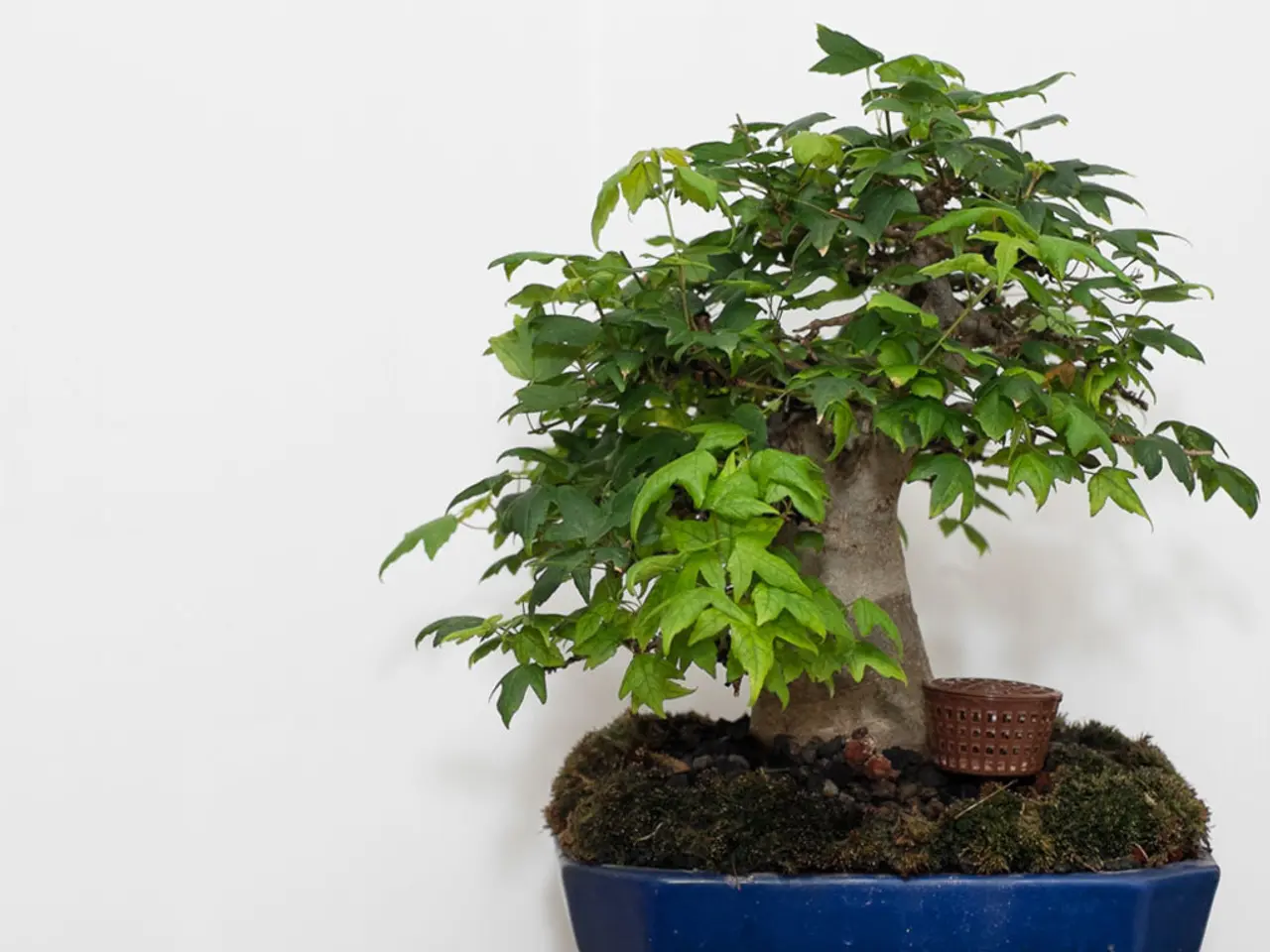Bonsai Containers: Selecting the Ideal Vessel for Your Bonsai Tree
When it comes to cultivating a beautiful bonsai tree, the choice of pot is just as important as the tree itself. A well-chosen pot can enhance the tree's natural beauty and ensure its health, while a poorly chosen one can hinder growth and detract from the overall aesthetic. Here's a guide to the best practices for selecting a bonsai pot that creates harmony and balance.
Size Matters
The pot should be proportional to the bonsai tree to maintain visual balance and support health. Typically, the pot's length is about two-thirds the height of the tree. Younger or vigorous bonsai often do well in shallower pots to encourage root development, while older, mature trees can be placed in deeper pots.
Shape Shape Shape
The pot's shape should complement the bonsai's form and style. Rectangular or oval pots might suit upright or formal styles, while round or irregular shapes can enhance informal or cascading styles. The pot should provide a stable base that visually balances the tree's silhouette.
Material Matters
Traditional ceramic pots are highly favored for their aesthetic and natural appearance, offering texture and color that harmonize with the bonsai. Unglazed clay pots are often preferred for formal trees to accentuate natural tones, while glazed pots may suit flowering or deciduous species where color contrast is desirable.
Drainage is Key
Adequate drainage is essential; bonsai pots must have drainage holes to prevent waterlogging and root rot. Many pots are raised on feet or slightly elevated to promote air circulation under the pot, which helps maintain healthy roots.
Aesthetic Appeal is Important
The pot should harmonize with the bonsai's style and species without overpowering it. Its color, texture, and finish should complement the tree's foliage, bark, and overall mood. The pot acts as both a functional container and a visual frame, so subtlety and balance in design are key.
Consider the Species
The species of the bonsai tree plays a vital role in pot selection, as different species have distinct growth patterns, textures, and colors that must be complemented by the pot.
Pot Influence on Growth
The pot's shape and size can influence the tree's growth patterns, subtly guiding the branches and roots to create a harmonious whole.
Balancing Harmony and Contrast
Balancing harmony and contrast in the bonsai pot selection process is a delicate art. Thoughtful consideration of the pot's shape, size, and design can create a sense of visual flow and movement.
Exploring Accent Colors
Examples of vibrant accent colors include vibrant coral, soothing sage, dramatic crimson, and luminous turquoise. The use of earthy tones in bonsai pots creates a sense of natural harmony and rustic charm.
Antique and Vintage Pots
Antique or vintage bonsai pots can be a valuable investment for enthusiasts seeking unique, one-of-a-kind containers that add historical charm and character to their miniature trees. Refinishing a bonsai pot can elevate its aesthetic appeal, harmonizing it with your decor.
Design Elements
The strategic incorporation of texture and pattern in a bonsai pot can elevate visual interest. Intricate patterns and motifs in the pot's design add an extra layer of depth and complexity to the composition. Design elements of the pot, ranging from simple and understated to ornate and intricate, can further elevate the aesthetic appeal of the composition.
Outdoor Bonsai Pots
There are bonsai pots specifically designed for outdoor use, crafted with durable materials and features that withstand harsh weather conditions.
Creating a Cohesive Composition
A well-designed pot can create a sense of movement, drawing the viewer's gaze through the curves and lines of the container, and ultimately, to the tree itself. A pot with a tactile, organic texture can evoke a sense of earthiness, while a pot with a smooth, glossy finish can introduce a sense of modernity and sophistication.
In conclusion, choosing a bonsai pot requires balancing practical considerations like size and drainage with artistic elements such as shape and material. The goal is a unified presentation where the pot enhances the tree's natural beauty and ensures its health. Assess your bonsai's growth rate and root development, typically every 2-5 years, to guarantee the container accommodates the tree's increasing size and maintains a harmonious balance between roots and foliage.
- To maintain the ideal lifestyle for a bonsai, it's essential to consider the pot's size, shape, and material, as well as its drainage and aesthetic appeal, for a unified presentation that enhances the tree's natural beauty and supports its health.
- In cultivating a beautiful bonsai, the choice of pot is just as vital for fashion-and-beauty purposes as it is for promoting home-and-garden harmony, as a well-designed pot can create a sense of visual flow and movement.





